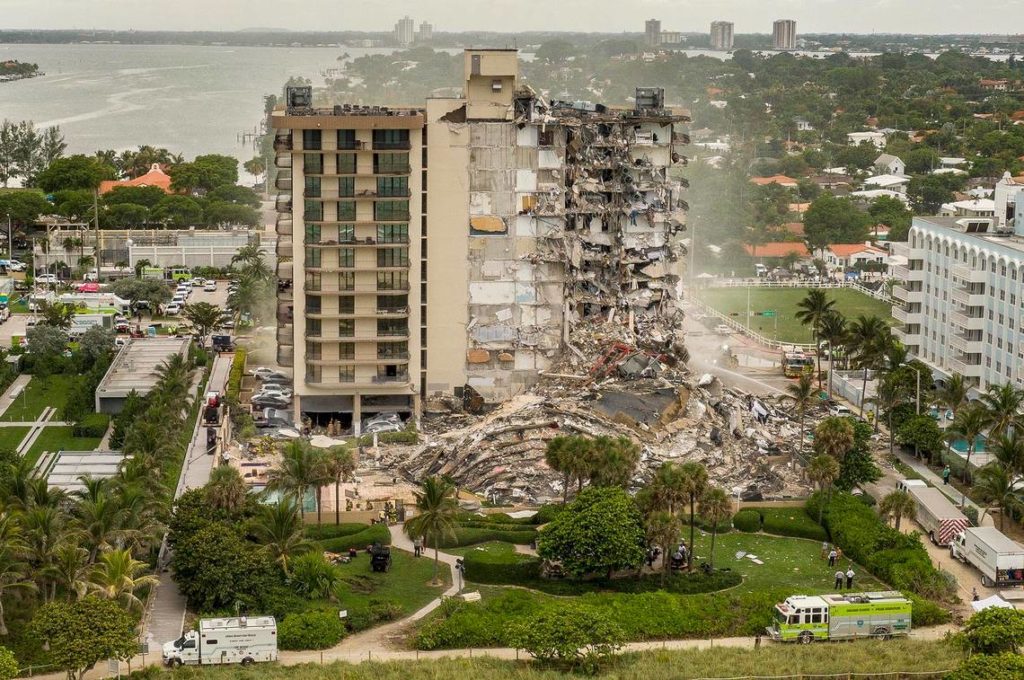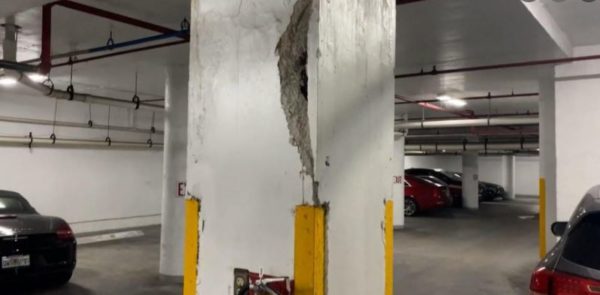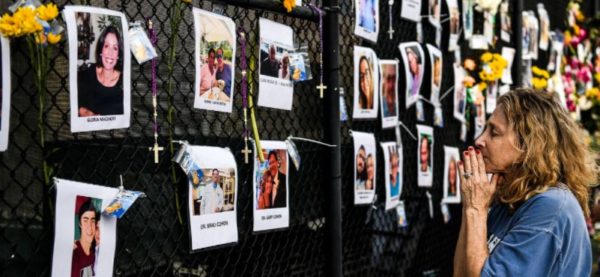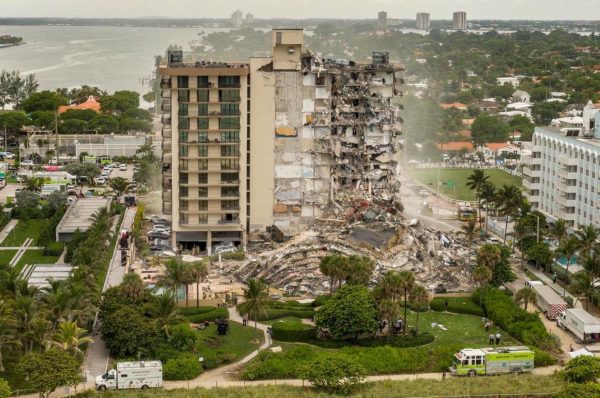
Miami Surfside – The death toll in the collapse of the Champlain Towers has surpassed 100 and continues to rise as rescuers pull more bodies from the wreckage.
The story of the Champlain Towers collapse is inextricably tied to the impending doom of infrastructure nationwide. We’ve heard politicians discuss plans to repair national infrastructure for the past 2 decades but not much has been done. And the Champlain Towers may just be the first domino to fall.
- Only 11 days after the collapse of the Champlain Towers, the remaining section of the high rise was evacuated and demolished over safety concerns. [1]
- Crestview Towers, which is another North Miami Condo near the Champlain Towers was issued an evacuation order after being deemed unsafe.
Is South Florida too relaxed about code enforcement? And was this lapse in judgment part of the reason the apartment building collapsed? According to a New York Times article, the collapse of the Champlain Towers South has stirred some long unanswered questions about how High Rises in Florida are allowed to skirt inspections.
Most of Modern-Day Miami was built during the violent, drug years of the mid to late 20th century.
270 buildings in the Miami skyline were built between 1970 and 1989, making up a large part of the Miami intercoastal area. Many buildings with 8 floors or less (the vast majority) were built before 1970. Miami is older than you may think, and lackluster inspections leave too much room for disasters like the Champlain Towers South collapse.
Each building is maintained and repaired separately which means there is no consistency, and the lax in code enforcement makes it even harder to tell which buildings are in drastic need of repair right now.

If you allow lax enforcement, there will come a time that structures begin to fail.
Is this a larger problem for Miami? Most definitely.
According to the Wallstreet Journal, in the example of the recently evacuated Crestview Towers, “the condominium manager on Friday submitted a recertification report from January in which an engineer deemed the property unsafe, according to a city press release.”
Why wasn’t this building deemed unsafe in January, when the original recertification report was filed? Was the collapse of the Champlain Towers the catalyst that code enforcers needed to begin taking longer, harder looks at the Miami Skyline?
How strict are current building codes and regulations in Miami?
Ironically, current codes are very strict. All builders and engineers have to abide by a stringent set of rules while construction is underway.
Additionally, all Miami buildings undergo a review 40 years after construction. The Champlain Towers were built in 1978, which means the building was reviewed in 2018, 40 years after construction ended. And how did the Towers do?
Terribly.
According to the report which was made public, engineer, Frank Morabito, said the lack of proper drainage was “a systemic issue” that stemmed from a flaw “in the development of the original contract documents”.
The building was not draining water correctly, an issue that was flagged and called “major structural damage” in the report. According to the BBC, “His report didn’t suggest the 40-year-old building was at any imminent risk of collapse but he urged that the concrete repairs be carried out in “a timely fashion”.” [2]
Enforcement may be the wrong word to use.
Although this report is on the books, to say that these recommendations were enforced would be incorrect. Calling them guidelines would be far too generous at this stage.
Some buildings in the area have reports that are past due, while others, like the Champlain Towers, have submitted reports that outline issues and errors, but nothing has been done to fix them.
Steinger, Greene & Feiner’s own Ian Duncan was interviewed by Fox Business and said “typically, a concrete building with rebar reinforcement will show signs of rust and deterioration to the steel rebar over time, which results in deterioration of the concrete surrounding the rusted rebar, and in turn, the potential for structural failure if not remediated.”
“In oceanfront, saltwater areas, this deterioration is accelerated and magnified,” Duncan said. “Therefore, the homeowners’ association and its maintenance/management company should be diligent and vigilant in conducting periodic inspections in order to identify and remedy deterioration and prevent structural failure.” [3]
Lots of cooks in a small kitchen.
So who handles these regulations? Miami is burned with a complicated hierarchy of power. The decision-making tree may have a few too many branches. In Miami, there’s a mayor, a strong mayor, then there are more than 30 incorporated cities, and finally, the county itself which makes up a massive portion of the Southern Tip of Florida.
And it could be that this complicated system of governance is a hindrance to passing real legislation that could prevent building disasters like this. This legislation is more important now than ever.

What Are The Consequences
The search for survivors continues, even during threats of tropical storms and hurricanes. Survivors and family members of the deceased are suing the Champlain Towers South Condo Association among others. In some cases, wrongful death lawsuits have already been filed. The investigation is ongoing and it’s difficult to determine who the culpable parties are but it can be said that in the case of the Champlain Towers collapse, there will be a high price to pay for those involved, and for the surrounding Maimi community.
Infrastructure and regulations are about to go under the microscope.
Sources:
[1]: The rest of the partially collapsed Surfside condo has been demolished
[2]: Florida building collapse: Report from 2018 warned of ‘major damage’
[3]: Miami building collapse: Attorneys, other experts weigh in on causes

